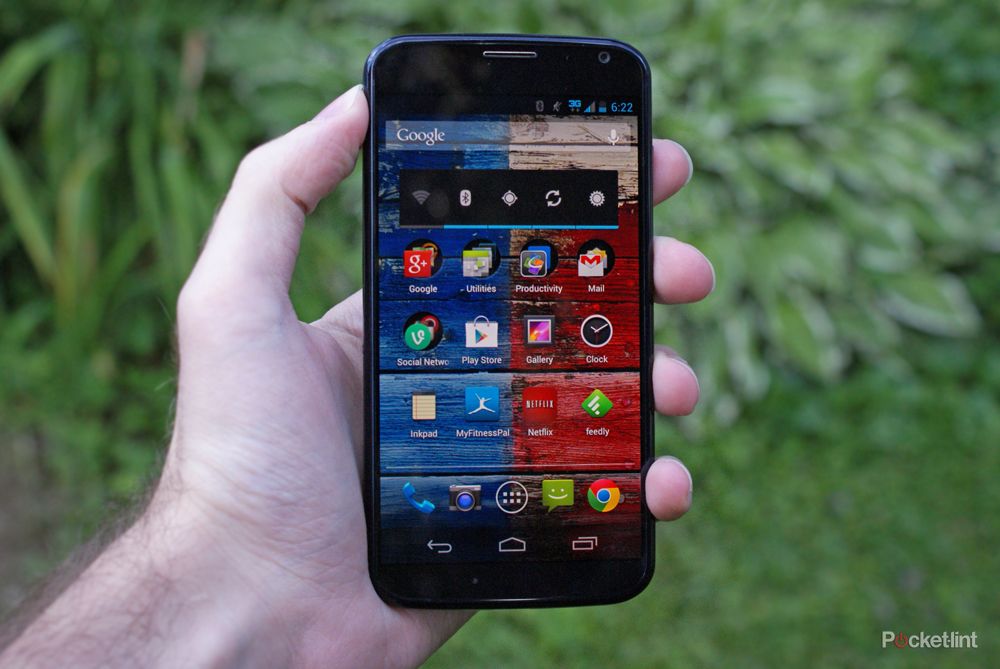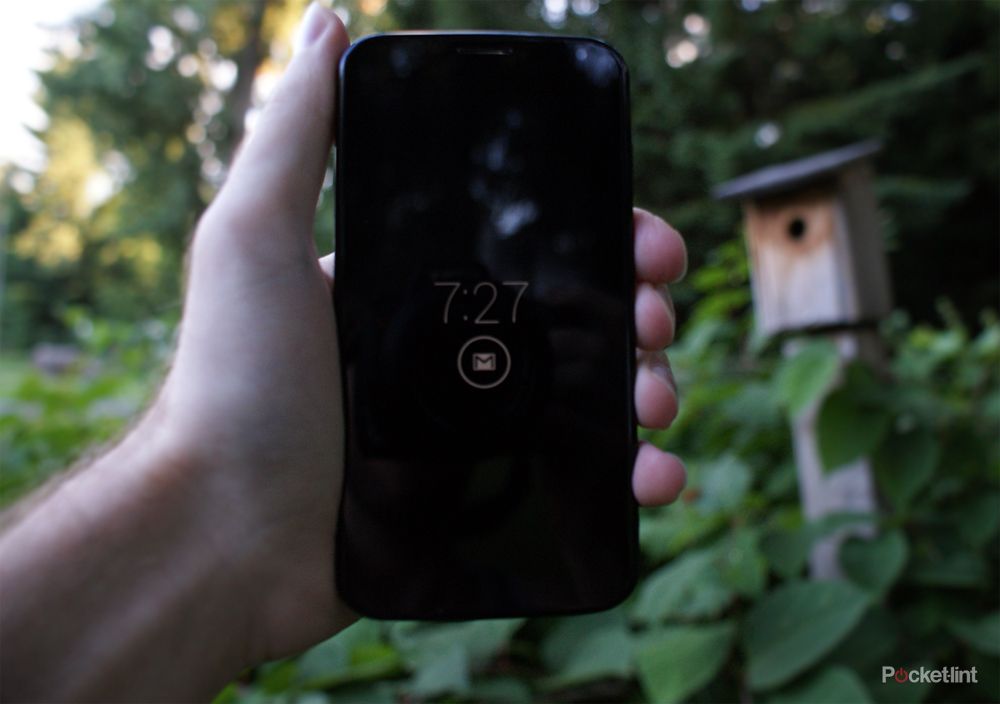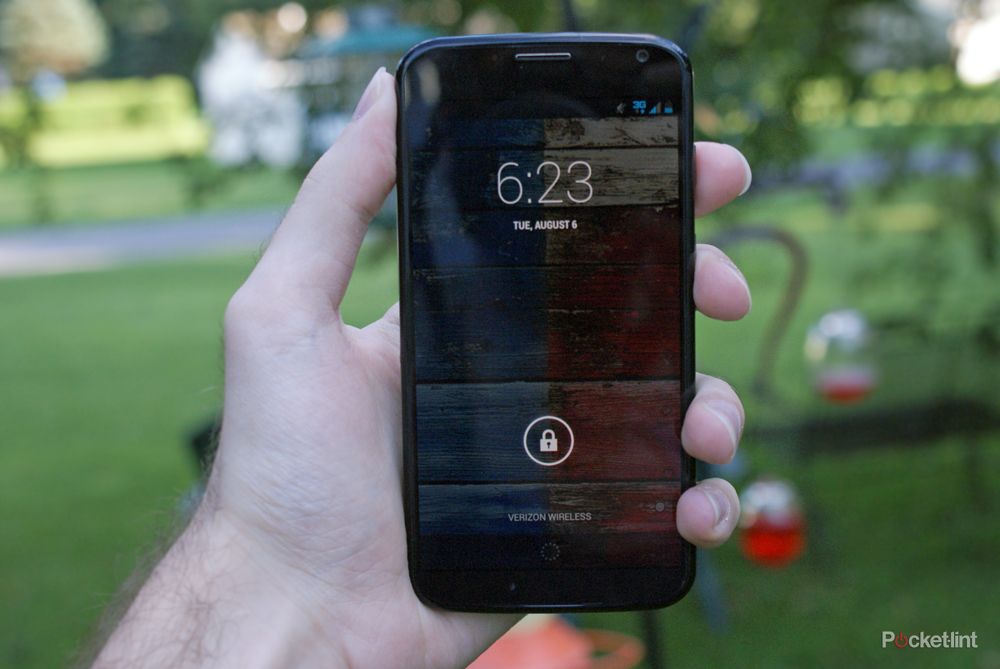There are only a few smartphones that release every year and actually turn heads, and the Motorola Moto X is supposed to be one of them. It's Motorola's first flagship since becoming a Google-owned company, so people are watching closely and eagerly.
Our quick take
The Moto X is smart. It's aware. It's packed with features. It's powerful enough and it's got the right amount of Android - without too much bloat or gimmick. We really like the Moto X.
It's not the flashiest smartphone out there, so we wouldn't recommend it to gadget geeks who want the latest and greatest on the market. But it is Motorola's first flagship as a Google-owned company, so it's an ideal handset for those Google lovers in the world who want an all-American piece of hardware made under Google's direct influence.
It also costs $199 on contract. Considering what else is available for that price, many might prefer a smarphone with a better, brighter display, speedier processor and more storage. Moreover, for an additional $100, some might even opt for the less beefy Nexus 4 because of its purer dosage of Jelly Bean.
Those high-spec Nexus and stock Android alternatives don't come in 252 possible colour combinations, though. In fact, that's where this smartphone will really set the market ablaze, if that's the sort of feature that lights your fire like it does ours. Motorola said over and over again at the Moto X unveiling event that it's attempting to target the middle-man. With the allure of personalisation alongside otherwise average specs, we think the company has indeed stumbled upon a potential sweet spot.
The average consumer, should they decide to gobble up the Moto X, will certainly be satisfied with all it has to offer, and even if it's not the most powerful beastie out there we've enjoyed using it this last week. It might not suit every man, woman and child, but if the customisation options are for you then that's one big box ticked.
All Motorola needs to do now is get its affairs in order and release the Moto X elsewhere, as lack of product in the UK and elsewhere is a major disappointment. Only time will tell how that will be dealt with.

Motorola Moto X - 4.5 / 5
| FOR | AGAINST |
|---|---|
|
|
But here's the thing: Motorola isn't trying to make the best smartphone on the market. What? In a world where manufacturers tout excellent engineering and top-of-the-line specs packed into their hardware products, such an idea seems almost laughable.
Motorola said it just wanted to release a device that would appeal to a broad range of consumers. With this goal in mind, the company didn't need to cater to prosumers by adding a 1080p display and a processor that could power a spaceship. It didn't even think a Nexus experience was a necessity. It did, however, believe in customisation.
Motorola wanted to launch a smartphone that's smart, colourful and enticing enough to make everyone from grandparents to schoolchildren happy. So, how did the company do? Is the Moto X the next smartphone that every man, woman and child should own?

Design
The Moto X is a customisable smartphone. Only AT&T subscribers can - at least initially - customise the Moto X. The available options are also strictly aesthetic, but you get the point. You can specifically select a storage size (16GB or 32GB), choose from 18 coloured backs like teal and yellow, and then pick one of seven accent colours for the buttons, camera lens ring, and so forth. Just adjust the variety of colour combinations with a very Googley-looking website called Moto Maker.
Once the customisations are set and an order goes through, a Texas factory of about 2,000 American workers will hand-craft your unique handset and ship it out in just four days. Motorola is pushing this USA-made thing, too. Sure, the Moto X is only assembled in America, but that's enough to get the mental picture and plenty of tailored, standout headlines.
The wide range of beautiful colours is a big hit with the media as well - and likely will be with consumers. The market is brimming with standard black, white and aluminium handsets, so the ability to add a touch of personalisation and brightness into most people's daily accessory is both long overdue and desired. Let's just see if colours are a 2013-14 fad or the way of smartphone-future.
Oh, and don't forget the wood-backed Moto X coming in the last quarter of this year. It's like nothing else out there, and we personally thought it looked and felt marvellous in our brief hands-on.

Hardware
The Moto X in general - in all colours and variants - feels great. It's a high-quality smartphone that offers a sturdy blend of plastics on its sides, cushy surfaces on the back and Corning Gorilla Glass on the front. There's absolutely no metal to be found though. As the Moto X feels so solid you almost forget this and think there's some sort of aluminium chassis in the mix. It doesn't exactly feel as well crafted as the HTC One, although its construction is leaps and bounds ahead of the Samsung Galaxy S4.
READ: HTC One review
Motorola never revealed the exact materials it used on the back shell - but it's not Kevlar. Printed over this oh-so mysterious backing - on both the black and white models at least - is a unique pattern that's a bit hard to describe. It almost looks like a bunch of gradient squares, which creates a Magic Eye-like effect that isn't easily discernible.
The only other markings on the back shell include a 10-megapixel ClearPixel rear camera. There's also an LED flash below the camera and a speaker grille to the right. Motorola's "M" batwing logo is beneath everything in an annular indent toward the middle-top. Finally, on the bottom of our black finish model, there is a grey Verizon logo coated over the trippy squared-pattern.
Moving on from the back, the Moto X's 4.7-inch display on the front is easy to manoeuvre around with one hand and is blemished only by a thin speaker grille on the middle-top, 2-megapixel camera lens on the top-right and a mic to the bottom-left.

The volume and power toggles are wiggly, plasticky bits on the right edge, and we're none too confident they could withstand a few drops on the floor. A 3.5mm headphone socket is right in the middle of the top edge, while a Micro-USB port sits at the bottom edge. The left side houses a nano SIM tray that requires a paper clip or key to open.
Lastly, let's talk about the 10.4mm thickness in the middle. Motorola said it curved out the Moto X so it would fit perfectly in the palm of your hand. The company didn't add a rounded rear just for comfort; a layered battery actually fills up the expanded area. The edges also taper to 5.6mm, so the handset doesn't feel too chunky. It works in the hand too; it's a pleasure to hold.

Display
Everybody was underwhelmed when news of a 720p AMOLED display first surfaced for a high-end Motorola smartphone. And to be honest, it is very so-so. The Moto X's screen experience doesn't hold a candle next to the HTC One's Super LCD display, mostly because it loves to amp up those red hues. Aside from a few over-saturation issues, there's only an occasional sign of text pixelation. That said, we didn't find ourselves longing for a 1080p screen. The 336ppi pixel density served us well and looked decent for the most part.
The most annoying aspect of the Moto X's display concerns its brightness. Trying to use it outside is annoying, and we found ourselves adjusting the brightness on a regular basis when leaving a dim indoor setting and entering the glare of the sun. The system's auto-brightness tool doesn't do the trick either, so power users may even need to look at third-party apps for adequately managing brightness.

Camera
The Moto X has both good and bad things when it comes to its camera offering. The 10-megapixel-rear camera is primarily ideal for shallow depth of field shots. Rick Osterloh, Motorola's senior vice-president, attributed this to "ClearPixel" technology in the camera sensor that allows for "75 per cent more light than a traditional sensor".
This also means the camera should perform well in low-light settings. However, photos - especially ones shot in dark conditions - are a bit too saturated and noisy. It's nothing to be alarmed about, but we can imagine serious photographers scoffing at such quality and processing.
Since photo quality isn't exactly mesmerising, the real winning features of the Moto X's camera boils down to its user-interface and Quick Capture function. Starting with the latter, a repeated flick-of-the-wrist immediately wakes up the handset and brings up the camera in about two seconds. It's awesome - we used this feature to death and loved it every time.

As for the camera user interface, there's no dedicated hardware button for the shutter. You simply tap anywhere on the screen to capture a photo. A long-press will even make the camera enter a burst-like mode. The ability to tap anywhere is super handy when taking selfies. Yes, we'll admit that. On the iPhone, for instance, it's hard to simultaneously aim the front camera and tap the shutter button (either on screen or side toggle), so it's a real treat to just tap anywhere on the Moto X to begin snapping away.
If you'd like to focus your shot, or turn off HDR (high dynamic range) and flash - and even try panorama or slow-mo - just swipe from the left to bring up the power tools. Conversely, once you've taken a picture, swipe from the right and then tap once to bring up a trio-of-rings icon on the bottom left. Select this icon to see photo-editing tools like filters, frames, cropping, exposure, sharpness, curves, and more. There's an option for everything. It's like an Instagram and paired-down version of Photoshop Mobile in one. Very cool.

Software
This is stock Android, for the most part. The Moto X ships with Jelly Bean 4.2.2, and it's quite similar to the Galaxy S4 and HTC One Google Play Edition. There is a bit of bloat, though. Our Verizon handset had NFL Mobile, Voicemail, Verizon Tones, VZ Navigator, QuickOffice, My Verizon Mobile, Caller Name ID and Mobile Hotspot. And they couldn't be uninstalled, just disabled. Ugh.
READ: Samsung Galaxy S4 review
But these hindrances are easily overlooked - thanks to a few custom tweaks that really should be on Android OS by default such as Motorola's Touchless Controls. The first part of this Moto marketing phrase means you can set the Moto X into an "always listening" mode. Just train the handset so it responds to your voice and the phrase "OK Google Now".

The set up takes about 30 seconds, and it's super easy. After that, touchless controls is ready to go. And, boy, does it work well. It literally and always responded to the programmed voice and ignored any attempts by someone else. That said, as with most of these voice-recognition services, it had some trouble understanding us in loud places.
When it does understand you, you can write a note, place a call, send a text, search Google, and a whole host of other tasks. But this feature is rendered practically useless if you have a passcode enabled. It'll only place calls when locked, thus defeating the purpose of "touchless". In other words, some might find voice-enabled, touchless controls rather gimmicky on the Moto X. But it's also not something that smartphone manufacturers aren't willing to give up on just yet.

Closely related to touchless, the Moto X also features an app called Assist that allows users to micro-adjust the smarphone's settings for certain situations. You can set the smartphone to a Do Not Disturb-like option during meetings, but one of the cooler options is a Driving mode that enables drivers to stay focused while on the road. It basically goes hands-free and announces all incoming messages and calls, and it can respond and answer them respectively without any hiccups. We tested this feature many times over the weekend and loved it. Just loved it.
Last but not least, you have Active Notifications. It's kind of like a lock screen and notification centre combo. It illuminates just a portion of the screen - to save battery life, according to Motorola - and it serves up notification icons for messages, emails and more. You can tap on the most recent notification to see more details in a preview, or just swipe to wake up the smartphone and directly access an app for a notification.
It's easy to understand actually, and it is surprisingly useful. However, it's still simple in concept at the moment. It should be neat to see where Motorola goes with this in the future.

Performance
The Moto X has a bevy of mid-range specs (much like the $299 Nexus 4 does), even though it's poised as a more high-end handset. Nevertheless, there's a valid reason why it could rival the big boys like HTC One and Samsung Galaxy S4: it's fast and buttery smooth in operation. The X8 custom architecture - which features a 1.7GHz dual-core Snapdragon S4 Pro, quad-core Adreno 320 GPU, two other cores for contextual computing and natural language, alongside 2GB of RAM - can handle games, movies, place calls and switch between apps without a stutter.
The Moto X might not come with all the bells and whistles of other high-handsets, but we found it to be perfectly capable. Project Butter's 60fps effectively eliminates the possibility of performance lag and serves up swift transitions, fast loading and seamless app launching. However, the Moto X's ability to handle power-user consumption and intense graphics is nothing compared to its battery life.
The 2,200mAh battery lasted about 12 hours after a load of gaming and YouTube-ing. And we mean a lot. With normal use, we could picture most people getting an entire day's life without any battery-saving adjustments.
Finally, it's sometimes easy to forget that smartphones are just as much a phone as they are an all-round computer-like device for music and more. The Moto X's speakers worked well to our ears. They're loud enough on speakerphone when in a car or in a hands-free-like mode, and we could watch and listen to YouTube videos just about anywhere. We wouldn't say the speakers sound concert perfect, but they certainly do the job well enough and survived in mildly noisy areas too - just don't expect them to beat serious volume levels.

To recap
Priced at $199 on contract there are plenty of other similar-priced options out there such as the HTC One that bury the Moto X under mightier specs. But even so, and while it's not quite to that level, we've really enjoyed adopting the Moto X. It's smart and still powerful enough - plus it avoids too much bloatware as per the Samsung Galaxy S4. Motorola's customisation options will also tick the box for some - we think they're cool - and that gives this phone that middle-ground appeal that nothing else in the market has. It's not perfect, but we sure do rather like it.
